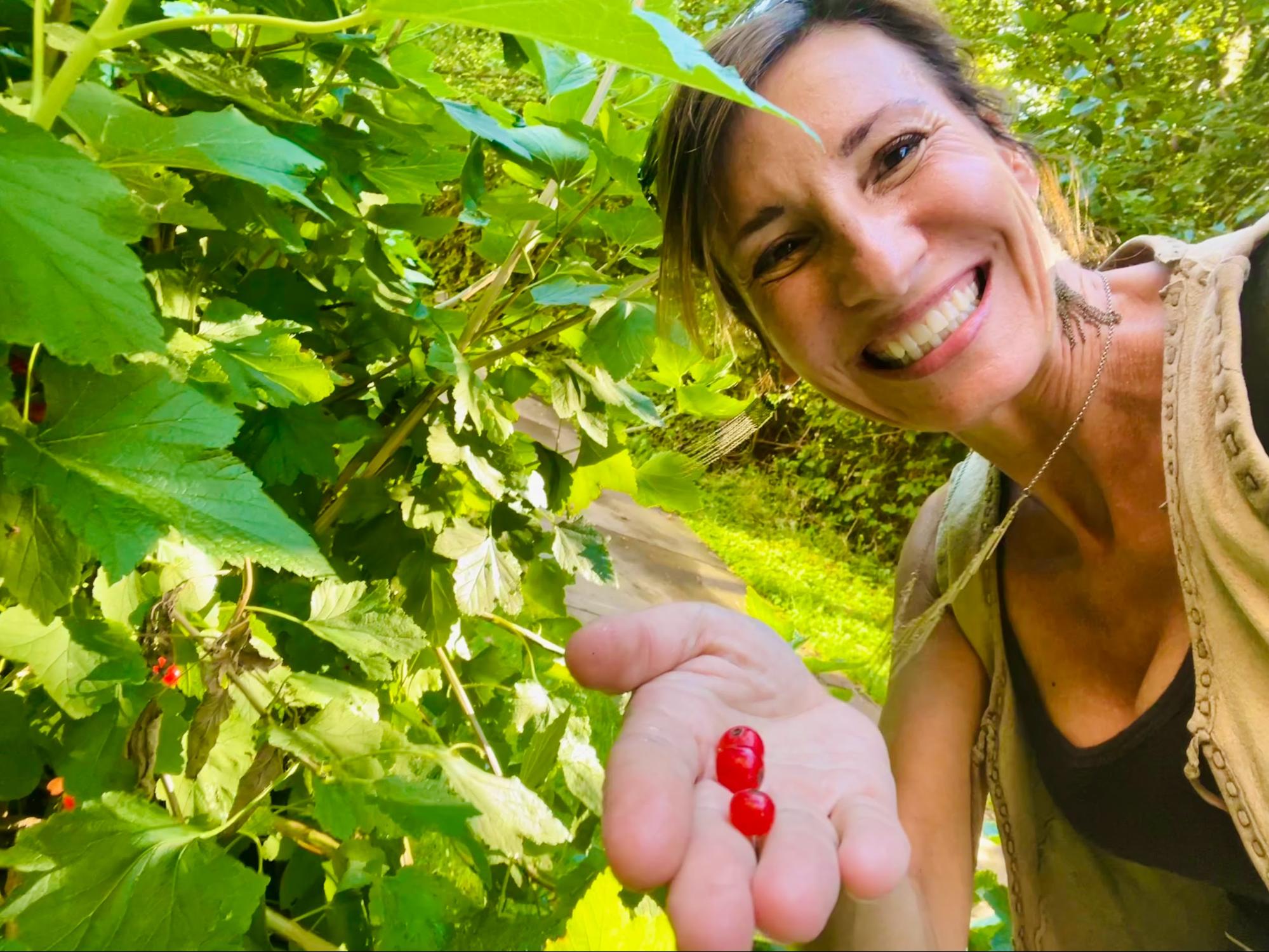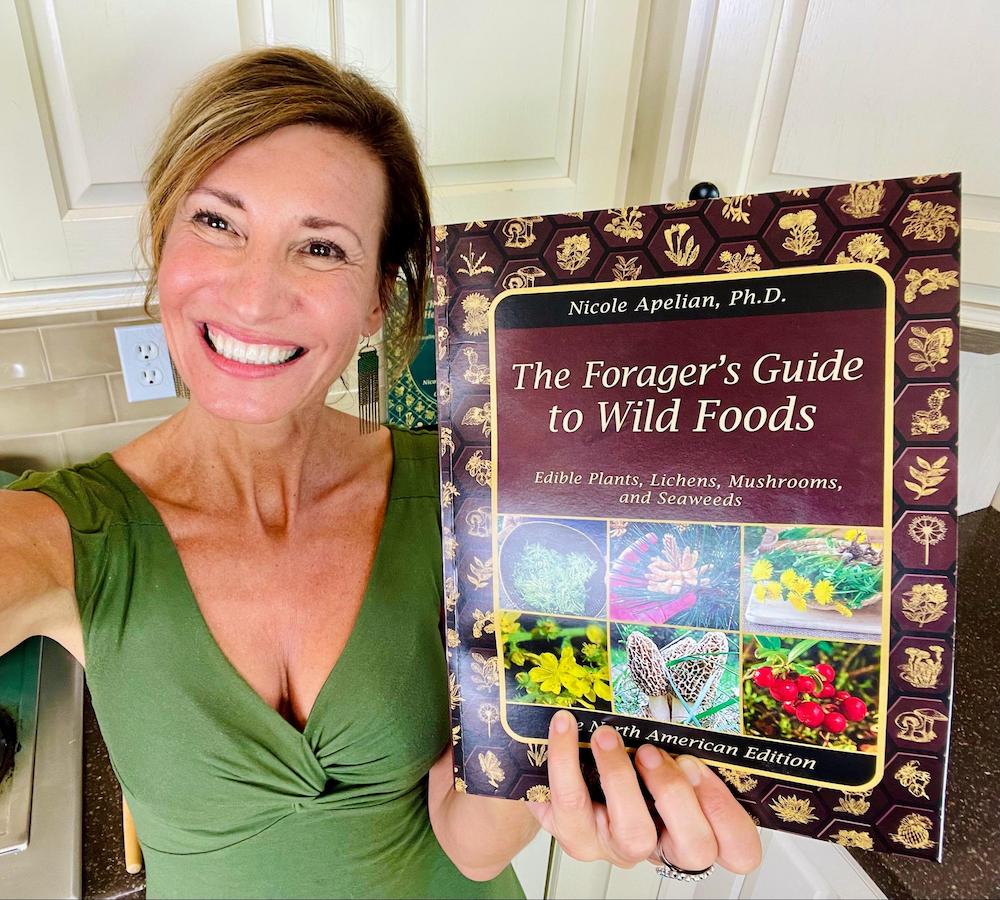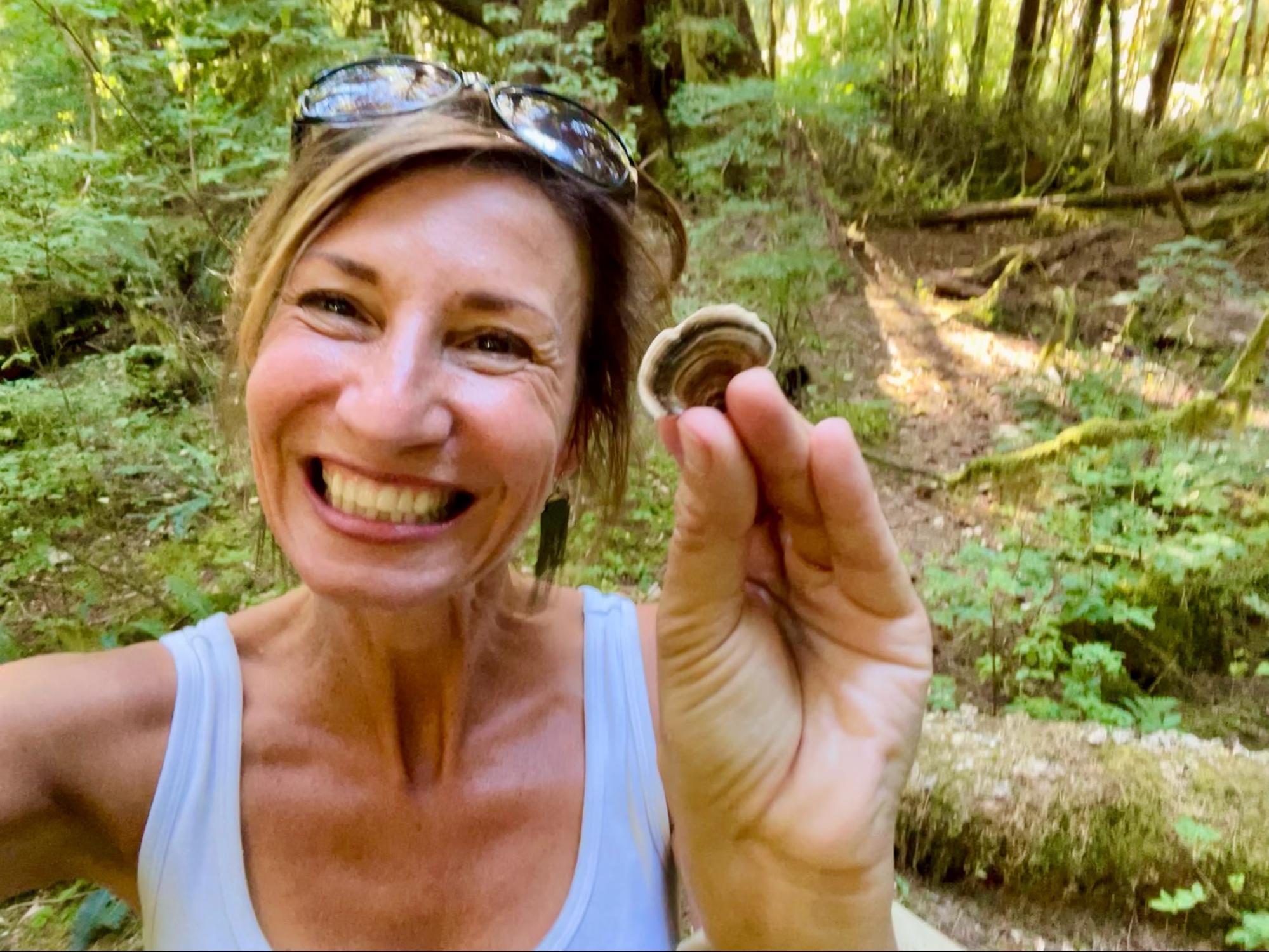There’s No Better Time Than Now
With autumn just around the corner, there is no better time than now to start thinking about your wild food game plan. Whether it is signing up for a local foraging class, organizing a group trip to a spot known for its abundance of wild foods, or familiarizing yourself with plants that will be soon coming into season, my quick guide below can help! Even if you have never foraged before, these are plants that are found throughout the USA and easily identifiable. It’s a great place to begin (or continue) your foraging journey.
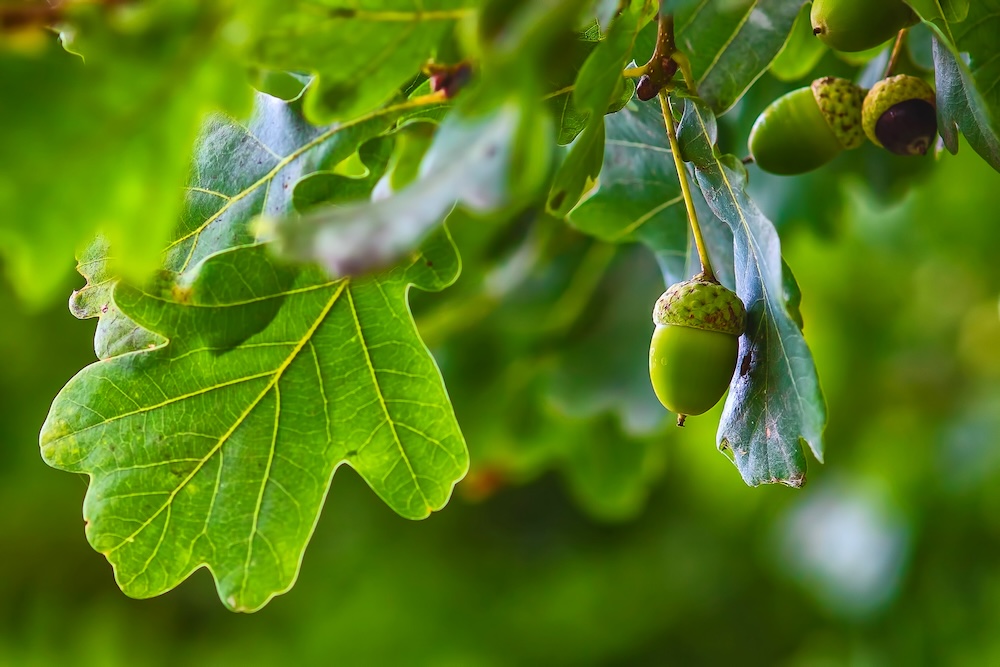
5 Common Wild Foods to Forage in the Fall
Oak (White), Quercus alba
With a trunk diameter of 2-3 feet (0.6-1m) and a height reaching up to 90 feet (27m), white oak trees are difficult to miss. Their bark is a light gray color and can have either shallow or deep furrows. The leaves are bright green and pale underneath, growing from 2-9 inches (5-23 cm) long with 7-10 evenly rounded lobes. You can readily find the tree growing in parts of the midwest and throughout the east coast.
The female tree produces ovid acorns that measure 0.5-0.8 inches (1.2-2 cm) long. Distinctive warty caps top 1/4 of the acorn. When the acorns are ripe, they are light brown in color.
How to Harvest and Eat: Ripened acorns can be gathered from the ground in the fall. White oak nutmeat is the sweetest of all edible acorns — however, it’s important to remove the tannins by leaching the shell-less acorns in several changes of water before using. You can roast the acorns or grind them into a flour once they have dried for 2-4 weeks. They can also be processed into a delicious coffee substitute.
Acorn Griddle Cake Recipe: Ingredients: 2 cups leached acorn flour, 1 large egg, 1/2 tsp salt, 1/2 cup water, 1 tbsp. maple syrup, 2 tbsp. butter. Combine the ingredients and whisk into a batter. Heat a greased skillet over medium heat. Ladle the batter into small pancake-sized rounds. Cook on both sides until brown.
Safety: Oak leaves, flowers, and unripe green acorns are toxic.
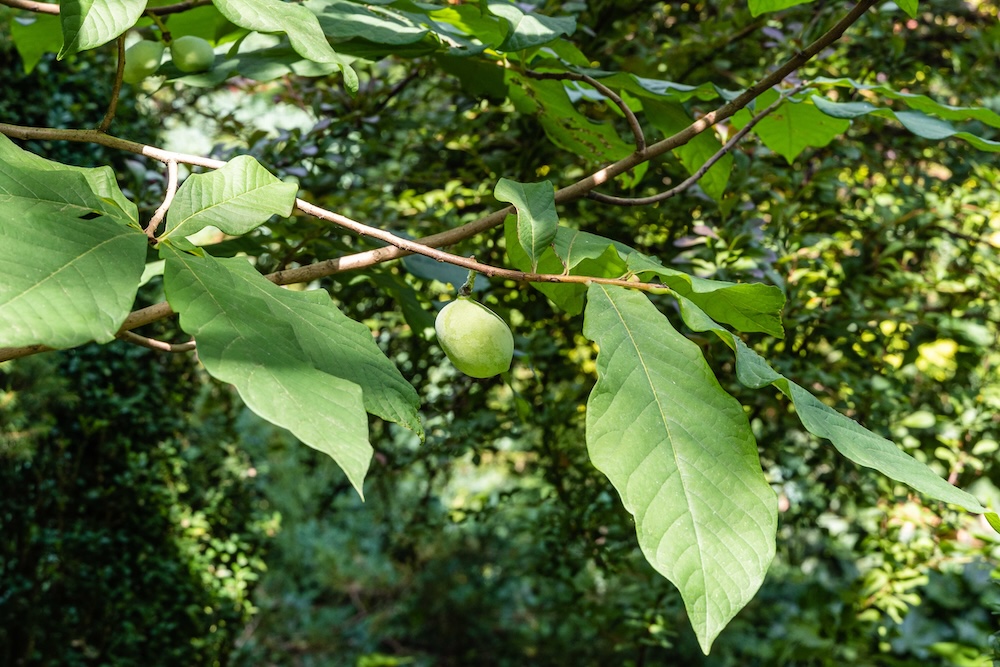
Pawpaw, Asimina triloba
Producing delicious, custard-like sweet fruit, pawpaw trees grow in the central, midwest, and east coast of the US. It can reach up to 30 ft (9m) high and has smooth brown bark that often has gray blotches and wart-like lenticels. Obovate leaves with smooth edges are dark green in color and measure 6-12 inches (15-30 cm) long. The oblong fruits can grow 6 inches (15cm) long and 1.5 inches (4cm) wide. The green fruit ripens to brown between August and October.
How to Harvest and Eat: Pick while still green and let ripen to brown before eating. Once ripe, the fruit has a banana-like flavor and can be enjoyed either raw or cooked. It can be used in baked desserts, puddings, bread, and ice cream.
Safety: Do not eat the leaves, unripened fruit, or seeds as they contain neurotoxic compounds that can cause vomiting and stupor. The leaves may cause dermatitis. Some experience an upset stomach when eating ripe pawpaw flesh.
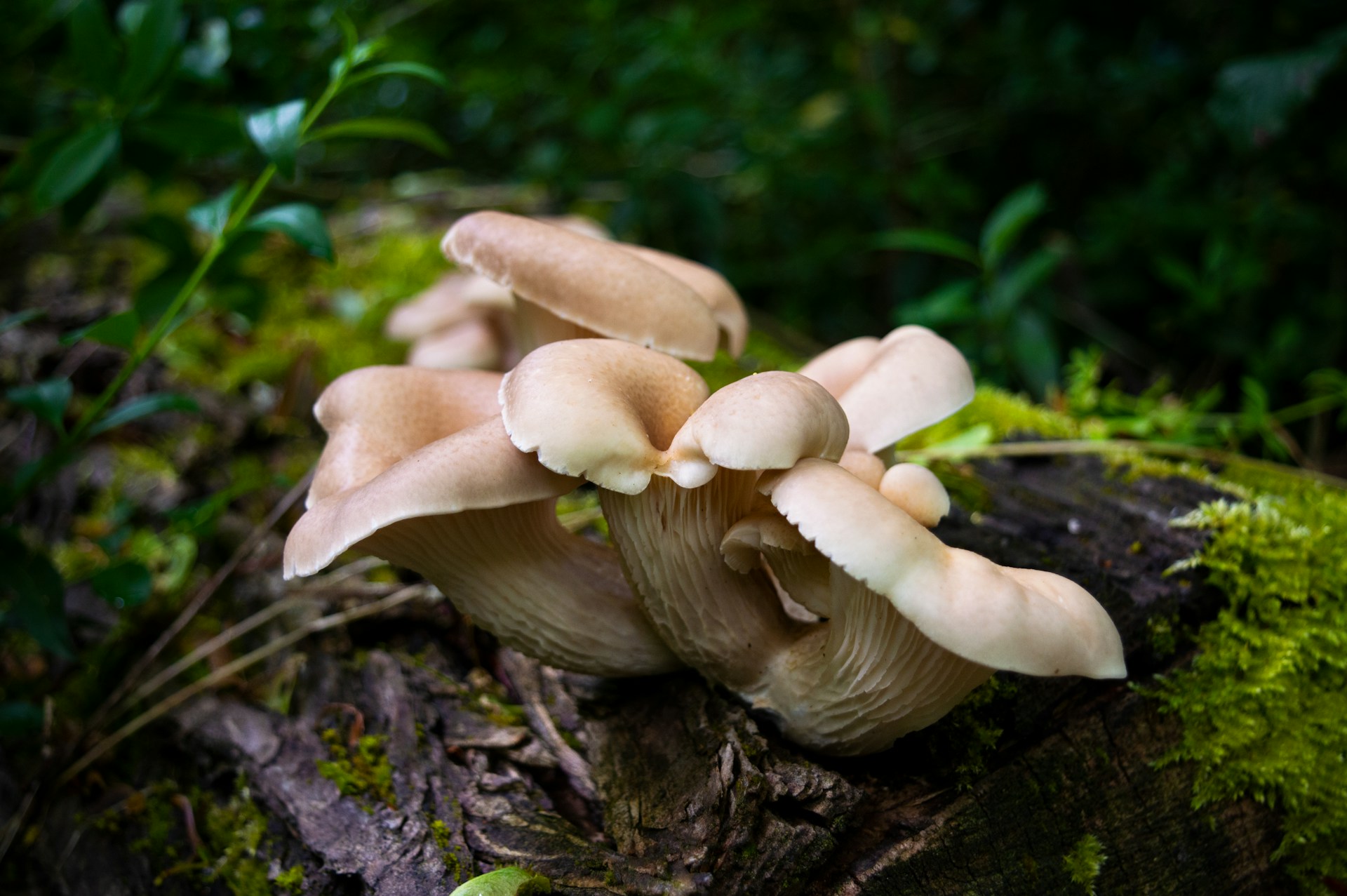
Oyster Mushroom, Pleurotus ostreatus
Found throughout the United States, including Alaska and Hawaii, oyster mushrooms appear from spring to late autumn after rainfall. They typically grow in overlapping clumps or shelves with wide, broadly convex caps measuring 0.8-11 inches (2-30 cm) and are fan-shaped. They are pale to medium brown and tinged with gray, pink, or yellow when young, then fade to a pale buff color as they age. The broad gills are whitish that become dingy with age. The gills run down the tough, dry stem (when present). The spore print is white to pale lilac, or faintly yellowish.
How to Harvest and Eat: Collect in the spring and autumn. The flavor of oyster mushrooms is earthy and slightly sweet — they are all-around delicious! Remove the rough stem and check the gills for beetles, larvae, and eggs before eating.
Safety: Poisonous look-alikes include Angel’s wings, Pleurocybella porrigens and Ivory Funnel, Clitocybe dealbata.
*It is important when first starting out foraging wild mushrooms to work with an expert in the field for safe identification.

Gooseberry, Ribes spp
A deciduous shrub that can be found across the US in fields, woodland clearings, and river edges, as well as forests, swamps, bogs, and rocky heights, there are over 50 species of gooseberry — and all are edible. The shrubs can be upright, growing 1.6-5 feet (0.5-1.5m) high, sprawling and loosely spreading. The leaves are three-lobed, grayish-green, and coarsely toothed. Many times they are covered with tiny hairs. The oval fruits range from greenish-yellow to red or purplish black.
How to Harvest and Eat: Gooseberries do not ripen all at once. The harvesting season can begin in June and ends as late as September, depending on your location. It’s best to use slightly unripe berries for jams, pies, and sauces. Mature fruits are soft when squeezed. Gooseberries pair well with meat, fish, and poultry. You can also enjoy them with cream for dessert.

Salsify, Tragopogon spp.
Otherwise known as goat’s beard, purple salsify, Jerusalem star, vegetable oyster, or oyster plant, salsify grows up to 4 feet (1.2m) tall and has either a sunny yellow or purple flower with slender, pointy petals. The green leaves are grass-like and linear, growing between 7-12 inches (18-30 cm) long and 0.8 inches (2cm) wide. They form dense rosettes and are a purplish-brown color along the lower stem. It is found throughout the US, except in a few southern states.
How to Harvest and Eat: The roots, young leaves, stalks, root crowns, and flowering shoots are all edible. The root has a similar taste to oysters and is best harvested from late autumn through winter — wait until at least the first frost as the root becomes tender and has the most flavor. Dig around the roots, taking care not to break them while harvesting. The roots can be eaten raw — or dried, ground, and roasted as a coffee substitute. The young leaves and flowering shoots can be eaten raw.
A Foraging Guide Like No Other
Discover the fascinating world of foraging with my book, The Forager’s Guide to Wild Foods: Edible Plants, Lichens, Mushrooms, and Seaweeds. This essential guide explores over 400 medicinal and edible wild foods found throughout North America, offering invaluable knowledge for both beginners and experienced foragers alike.
Within the pages of this guide, you’ll find detailed entries for each wild food, starting with a quick introduction that provides context and background. The range maps help you locate where the plants can be found, ensuring you’re foraging in the right place. This guide will help you to their edible uses and discover the medicinal benefits that have been harnessed for centuries.
To keep you safe, each entry also highlights any poisonous look-alikes, so you can forage with confidence. Detailed descriptions of the plants provide you with accurate identification, paired with high-quality color photos that bring each plant to life. Learn the best practices for harvesting to ensure sustainability and optimal yield, and try out simple, delicious recipes that showcase the flavors of these wild foods.
Whether you’re seeking to enhance your meals with nutritious, natural ingredients or looking to tap into traditional herbal remedies, The Forager’s Guide to Wild Foods is your ultimate companion. Dive into the world of wild foods and embark on a journey that connects you more deeply with nature.
Live in Europe? I have a foraging guide just for you! Tap here to learn more.
Wishing you many happy days of foraging adventures!
Nicole Apelian

